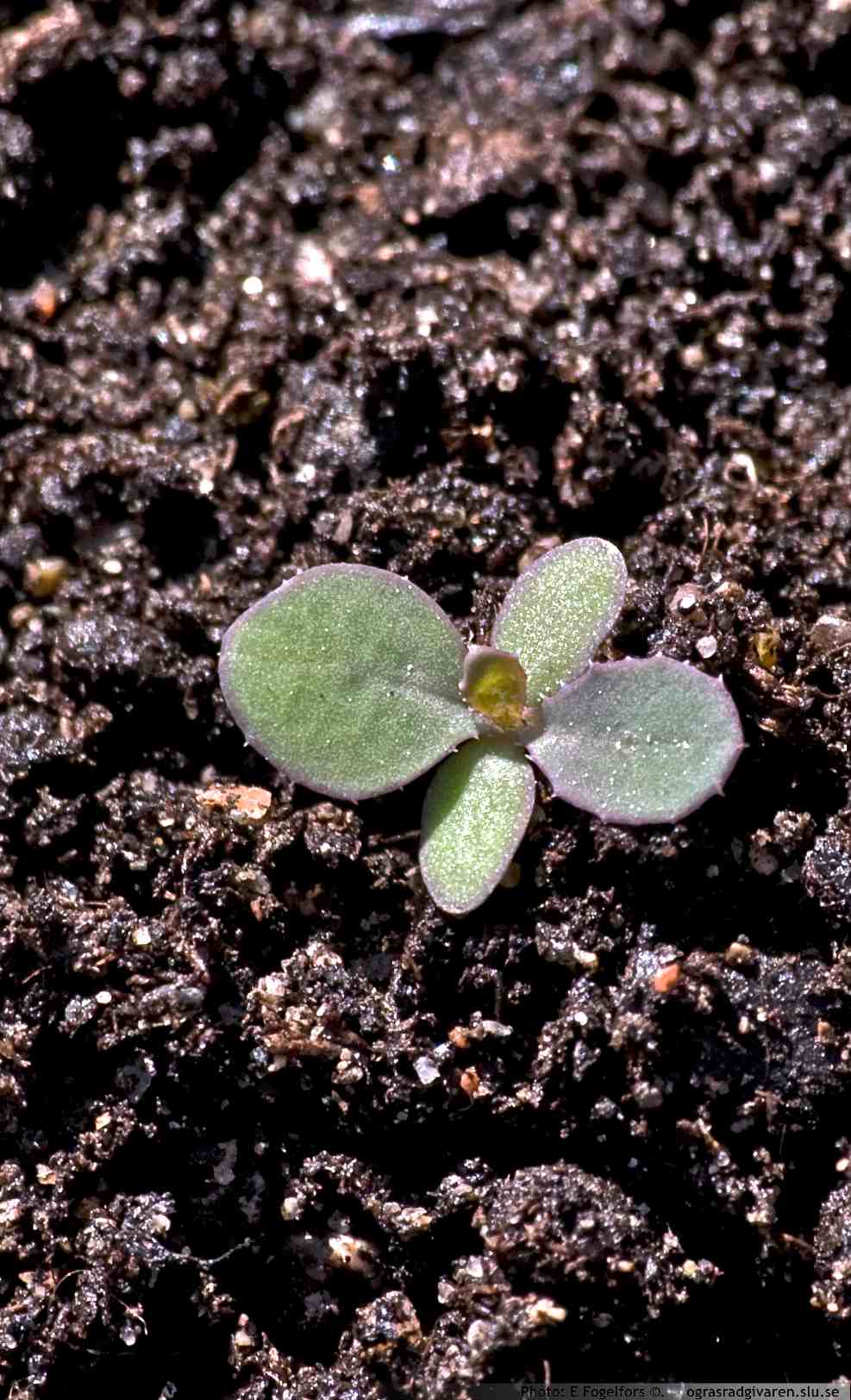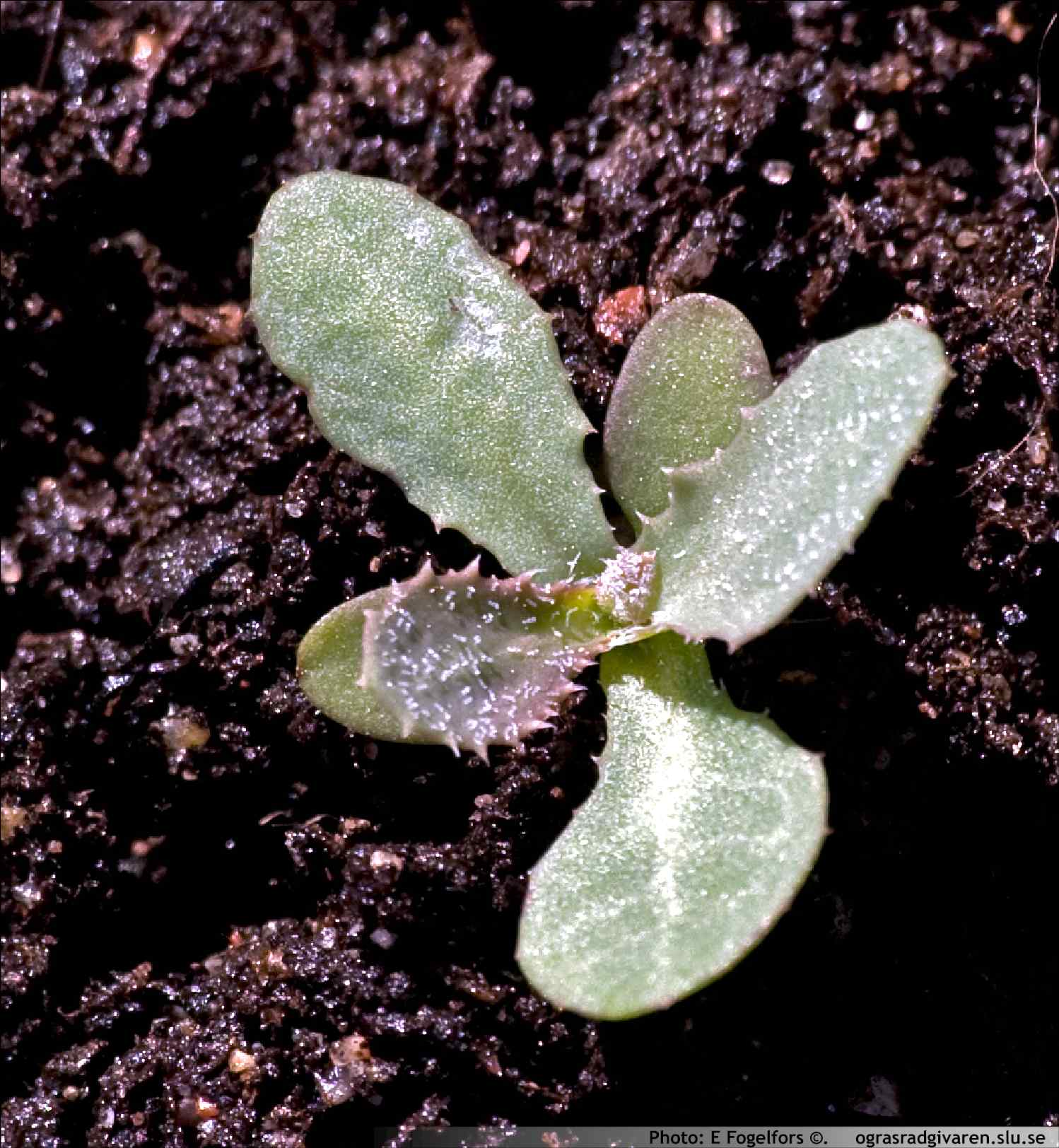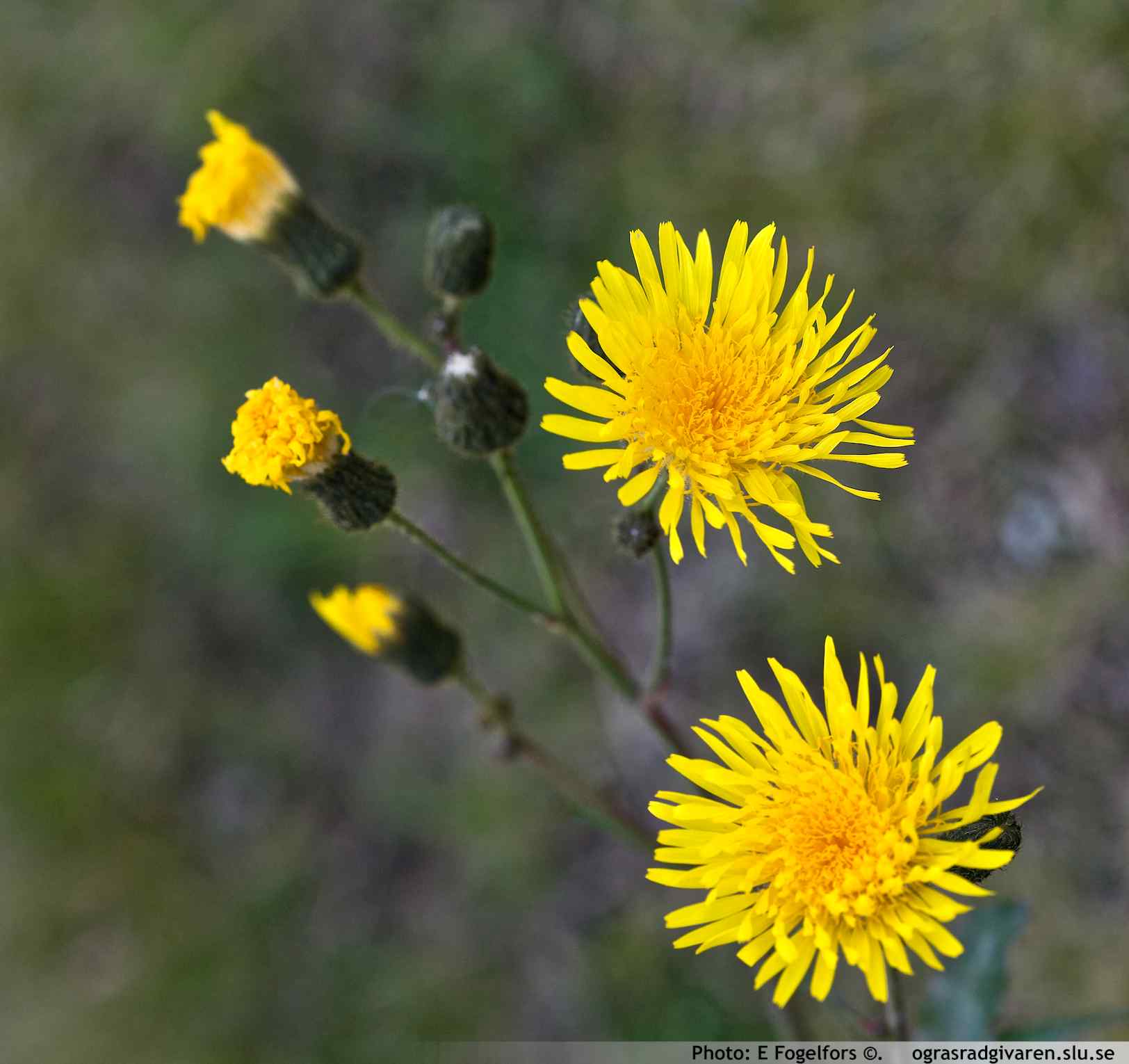Perennial Sow-thistle
(Sonchus arvensis L.) Fam:. Asteraceae
![]() Ager-Svinemælk,
Ager-Svinemælk,
![]() Põld-piimohakas,
Põld-piimohakas,
![]() Peltovalvatti,
Peltovalvatti,
![]() Akkermelkdistel,
Akkermelkdistel,
![]() Grisafifill,
Grisafifill,
![]() Tiruma mikstpiene,
Tiruma mikstpiene,
![]() Dirvine piene,
Dirvine piene,
![]() Åkerdylle,
Åkerdylle,
![]() Mlecz polny,
Mlecz polny,
![]() Осот полевой,
Осот полевой,
![]() Acker-Gänsedistel,
Acker-Gänsedistel,
![]() Åkermolke
Åkermolke
Sow-thistle is controlled in a similar way to creeping thistle, the main difference being that the cultivations do not need to be as deep, since most roots are found in the uppermost soil layer (0-15 cm), while those of creeping thistle reach far below ploughing depth.
General preventative measures:
- A large proportion of winter-sown crops (preferably winter rye) and a ley proportion of at least one-third in the crop rotation (preferably two-year leys).
- Competitive crops and varieties. Crops such as maize, linseed, lupin and peas in pure culture promote weeds.
- Plough in spring if possible in terms of soil conditions and sow as soon as possible after spring ploughing.
Control measures:
- Even if sow-thistle is in dormancy and does not grow during the autumn, breaking up the roots of sow-thistle through e.g. a stubble cultivation directly after harvest followed by a deep autumn ploughing give a good control effect in the following year. This gives the spring crop a competitive advantage. If spring ploughing is possible this gives an even better control effect.
- A mini summer fallow after an early harvest in late June/early July, e.g. when a grass ley or full fallow is broken up. Break up the runners with e.g. a disc implement and then harrow up until autumn sowing as soon as the thistle shows 5-7 well-developed leaves (compensation point, see below).
- Spring ploughing followed by repeated shallow cultivations when the thistle has developed a leaf rosette consisting of 5-7 well-developed leaves up until autumn sowing can completely eliminate sow-thistle. The plant’s energy reserves at 5-7 leaves are at their lowest, since more energy is used during this first phase of development than is supplied through photosynthesis. The energy balance or net assimilation in the plant then becomes positive. The compensation point (see below) is passed. Repeated disruption at this stage means that the plant is gradually starved out. The same procedure with a mini summer fallow and half fallow also gives good effects.
- Repeated cutting of green manure crops and forage leys by either cutting winter crops or topping the field every time the thistles have developed 5-7 leaves. Optimal effect is achieved by 2-3 cuts/harvests. Two cuts are usually enough for sparse thistles. With 4 or more cuts the ley crop is pressurised too much and its competitive effects are lost.
- In some competitive crops, row hoeing when sow-thistle has 5-7 leaves can be an effective method. However, there is a risk of the rather fragile sow-thistle roots being broken up too much and instead giving an increase that the crop cannot cope with by competition.
Garden
|
Control/species (click):
Falsk såbädd/fördröjd sådd/senarelagd sådd.


